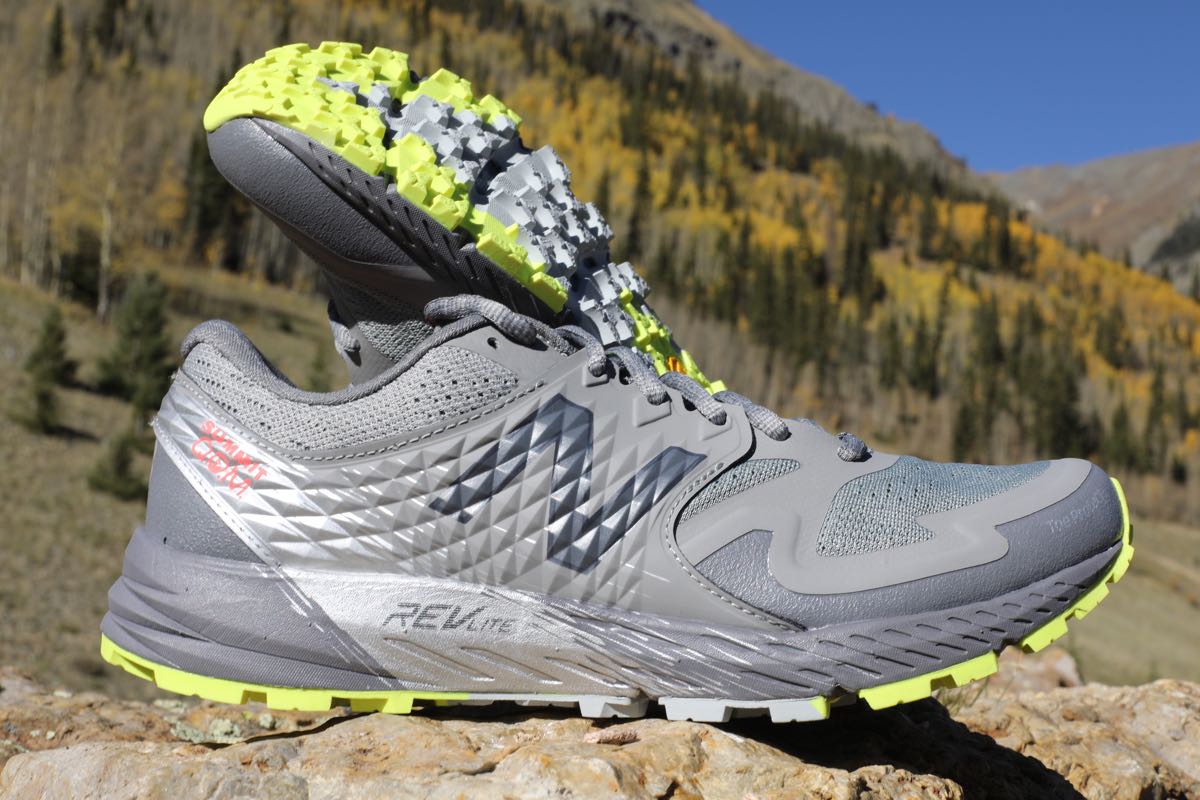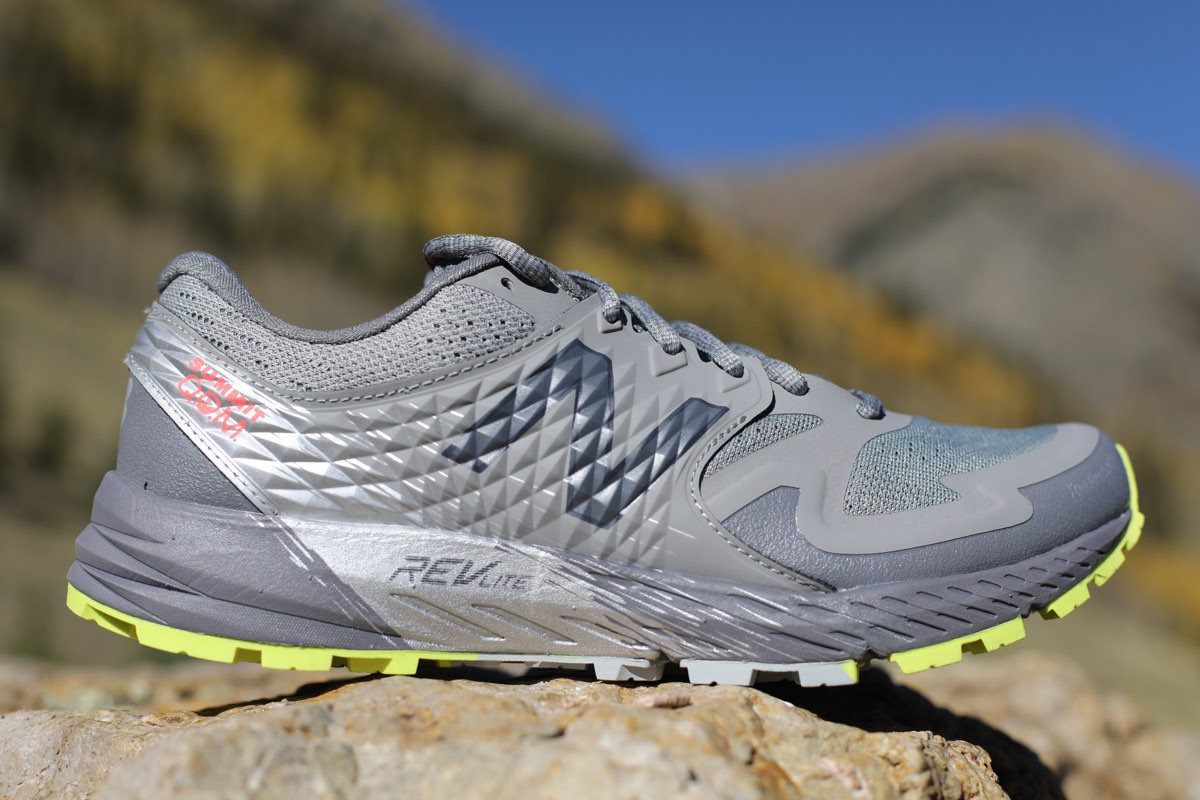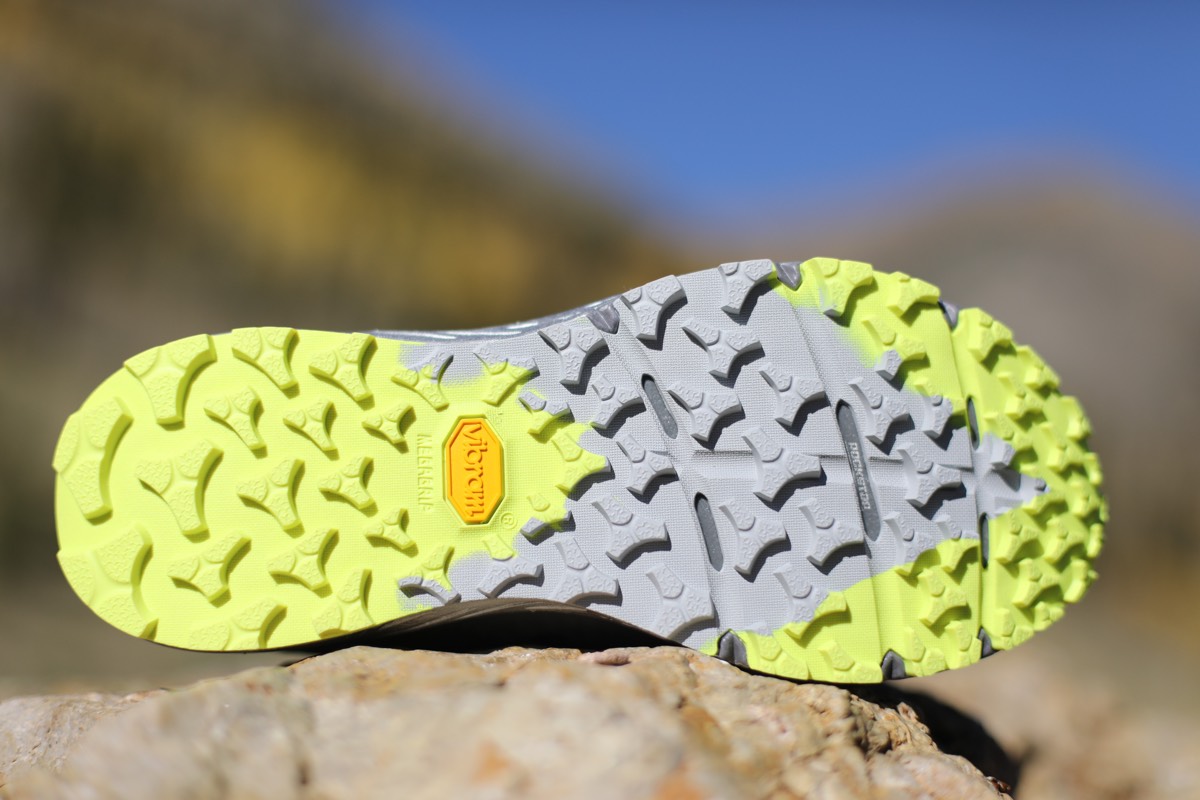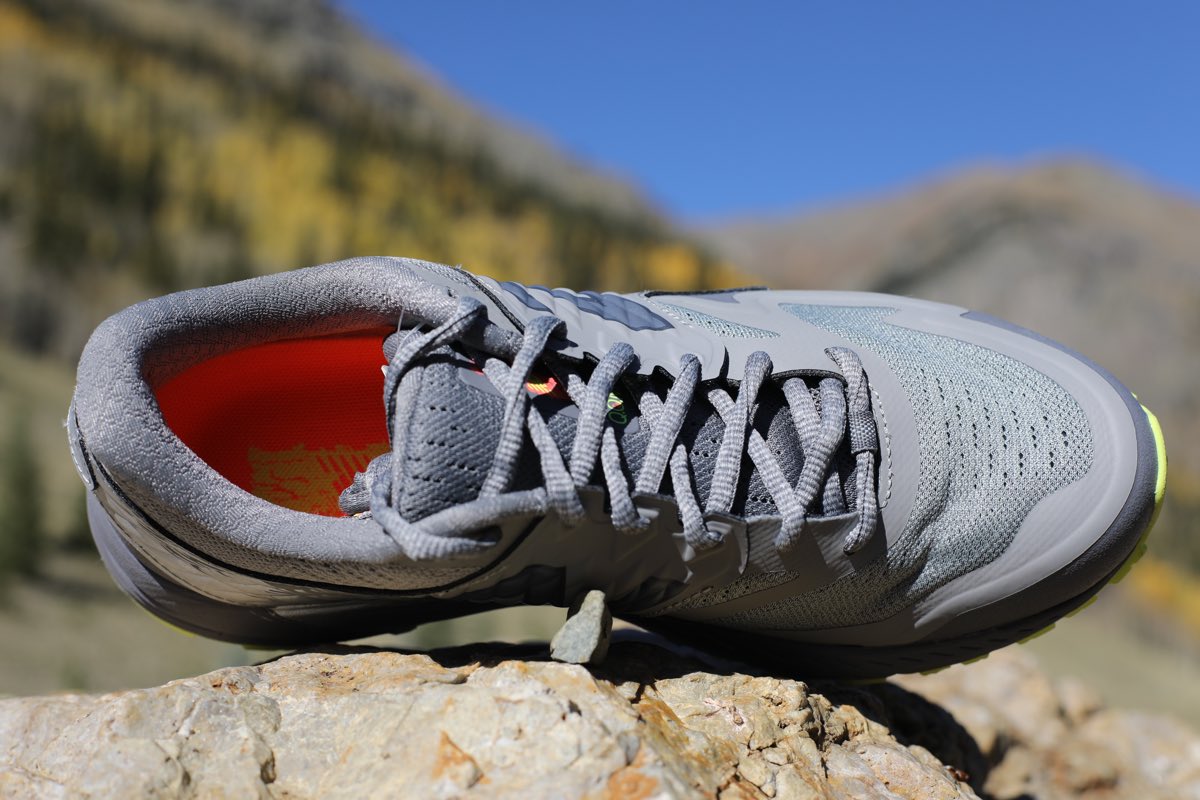Our Favorite Trail Running Shoes
Check out our Best Trail Running Shoes article to learn about our current favorite trail running shoes!
New Balance Summit Q.O.M./K.O.M. Review
New Balance released a new all-purpose trail shoe last July, and it’s been on heavy rotation in my trail-shoe collection since I received it in the late fall. I’ve enjoyed the New Balance Summit Q.O.M. (there’s also a men’s K.O.M.) ($119.99) as my all-around shoe here in the Front Range of Colorado and in the desert-mountain parks outside Phoenix, Arizona. It’s been a comfortable option on jeep roads, crushed gravel, off-camber red rock, and mountain singletrack. It’s not an aggressive mud/snow shoe, and it’s not a racing flat, but it’s like a jump shot around the perimeter—easy to put up (on), typically on target (the right choice for the usual conditions), and you can count on them to do the job (score the miles).
The New Balance Summit Q.O.M. and K.O.M. make me think of a trimmed-down version of the discontinued Leadville shoe or even the 910 v4. True to New Balance’s history, the shoe is available in B and D widths in women’s (and D, 2E, and 4E for men’s), which should allow those with a wider foot a solid opportunity for a proper fit. At 9.2 ounces for the U.S. women’s size 8 (10.9 ounces in U.S. men’s size 9), the Summit Q.O.M./K.O.M. is sturdy enough to hold up over tough miles and distances while not being so heavy as to weigh a runner down. The 8mm drop and a stack height of 16mm forefoot/24mm heel are gentle on the Achilles tendons and low enough to the ground that you can respond easily to the variations underfoot without being surprised or beat up by them. For me, it’s enough ground feel to avoid awkward ankle turns and twists at any pace but there’s plenty of cushioning and protection so my foot bones are happy even 20 rocky miles later. There is also a GTX model available at $134.99.
New Balance Summit Q.O.M./K.O.M. Upper
The upper gets the most attention in this review because unlike some trail running shoes, there’s a fair amount going on. The bumper has been reinforced with Toe Protect, a sturdy, structured strip with an extended rand which continues as one of the thinner overlays in the forefoot. There is nothing flimsy about this protection, and it would absolutely hold up against anything Black Canyon, Arizona or Moab, Utah might throw at you. The bulk of the upper is constructed with varying thicknesses and densities of mesh that do a great job of keeping sand and grit out. Most of that mesh is covered by significant overlays through the heel that also wrap around the midfoot into the lacing. While this isn’t a ‘stability shoe’ per se, there is a fair amount of support for the midfoot and heel present. Those who notice midfoot fatigue or increased pronation when the miles and uneven terrain take their toll may feel that this is just enough added support that some of fatigue-related changes are averted. Interestingly, the wraps also add significant protection if you run in areas with a lot of jagged rock or cactus. The overlays even successfully fought off multiple attacks by the evil cholla that litter every trail I seem to choose outside of Phoenix. With all this protection does come some decrease in moisture drainage. Creek crossings and slushy snow tend to stay inside the shoe for awhile once they’ve made it past the barriers, so if I were to use these in a race with several water crossings, I’d likely have a second pair of shoes for later in the race.
The heel counter is very structured which further enhances the stability of the shoe, yet it never seems forceful in its presence. There is a relatively low-profile Achilles notch and padded ankle collar. The sock liner inside the shoe extends up and over this which provides a smooth surface interacting with the ankle bones if you choose lower running socks. The moderately padded tongue is gusseted to the uppermost lacing hole and stays exactly where you put it when you first tie your shoes. The laces also have a bit of a sausage-style look which also ensures they stay tied the first time you tie them.
Two minor drawbacks within the upper are as follows. The removable insole provides the standard bit of extra cushioning, but overall I found it somewhat underwhelming due to the minimal arch support provided. Over 15 to 20 miles, my high arches were wishing for more support. Secondly, although widths are offered, the shape of the toebox is noticeably tapered medially and laterally which likely means going up a half size for many people. I’d love to see a slightly more natural foot shape to the end of the toebox. That plus a bit more support through the insole and arch would make these shoes unstoppable over any distances for me.
New Balance Summit Q.O.M./K.O.M. Midsole
The midsole of the Summit Q.O.M./K.O.M. is constructed from New Balance’s innovative foam compound called REVLite. The cushioning is lighter weight than standard EVA yet provides a significant amount of responsive cushioning while remaining on the firmer end of the spectrum. I absolutely love the ride on anything from dirt and jeep roads to singletrack with solid elevation change. With the ROCKSTOP layer beneath the midsole (a semi-flexible rock plate), I also felt well protected when running on rock slabs in slickrock-style running and on the pointy-rock desert trails.
My love of this ride lasted about 250 miles and then the midfoot flex point, where there’s a cut into the outsole (also aligned with where you push off), seemed to fatigue and ultimately break down. This resulted in some midfoot pain in both beet upon push-off due to a lack of midsole support at the flex point (or point of push-off) that was only present in these shoes. I’m not certain what the ‘easy fix’ is here, but the upper and outsole are absolutely bomber and made to last significantly more miles, so if this aspect was improved, again, these shoes could be unstoppable.
New Balance Summit Q.O.M./K.O.M. Outsole
Multidirectional triangular lugs of approximately 4 to 5mm depth cover the entire outsole and are made from the high-performance rubber compound well-known in the ultra-trail world—Vibram Megagrip. It’s really the perfect choice for the outsole of a shoe designed to be the only one in your closet. The balance between stability and ground adaptation is noticeable when you get on the more rugged trails, and the excellent traction on both wet and dry ground is remarkable especially in our stormier seasons here. The durability is unmatched and even at 300 miles, there are almost no signs of wear on the outsole. The beveled heel is apparent when looking at the sole and is designed to ease the heel-toe transition. I found it to be very effective and comfortable.
As a side note, I found the comfort of this shoe’s ride to vary with the wide temperature changes we have this time of year. The shoes were most comfortable and responsive in the 45-plus degree Fahrenheit range but felt much stiffer below 40 degrees. This is a marked change compared to my other trail shoes. I store my current trail-shoe quiver in the house (sorry, family) to mitigate the effects of low temperatures on midsoles, but it didn’t seem to help with this. I’ve been of the opinion for a few years now that the Vibram Megagrip sole also generally feels stiffer below 30 to 40 degrees, so perhaps this was a primary contributing factor.
New Balance Summit Q.O.M./K.O.M. Overall Impressions
The New Balance Summit Q.O.M./K.O.M. is a burly, everyday trail and mountain-running shoe with excellent grip and traction for most conditions. It is relatively lightweight for the protection and durability offered and is designed to be a contender for a ‘quiver of one.’ For the most part, it fits the bill… but I’d love to get more than 250 miles out of it from the midsole flex-point perspective. As I mentioned earlier, making the toebox more foot shaped will allow a larger range of runners to be happy in the shoe especially since it is offered in B and D widths. Though there’s not as much ‘stability’ built into the single-density midsole, I think those who miss the New Balance Leadville shoe can still find their support needs met thanks to the well-engineered overlays. Overall, it’s a great option for those looking for a workhorse shoe.
Call for Comments (from Meghan)
- Have you run in the New Balance Summit Q.O.M or K.O.M.? What do you generally think of the shoe?
- What details of the shoe do you really like, and what do you think could be improved?
- Have you noticed any problems with the midsole breaking down at its flex point, like Kristin has?
- What do you think of the Vibram Megagrip outsole performance?
[Editor’s Note: If you’re affiliated (i.e., an employee, ambassador, etc.) with a shoe brand, please share your relation in each of your comments on this article. Thanks!]





